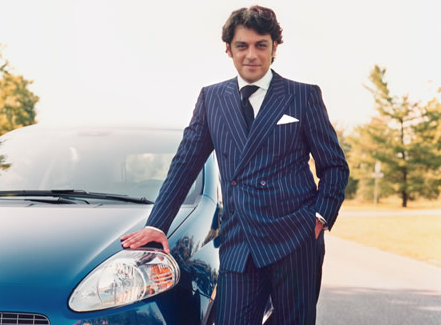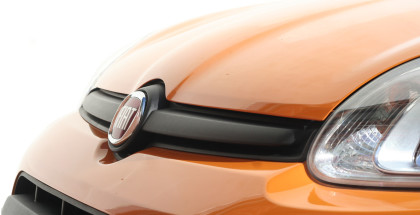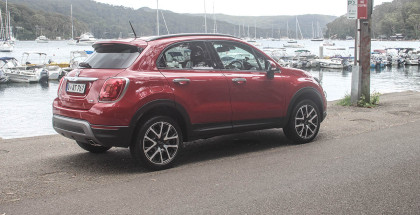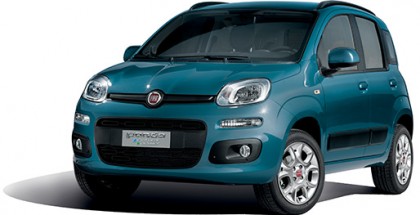An audience with Fiat’s Wunderkind… Luca de Meo
It’s not every day you get an invitation to dinner with the CEO of Fiat Auto. Last November I had an opportunity – with a number of other Australian motoring journalists – to meet the 39 year old wunderkind, plucked from Fiat brand Lancia to head up the iconic Italian car manufacturer after being at Fiat only three years.
Fiat is not only a very large corporation in Italy – Fiat is Italy. And Fiat is not just Fiat cars: it owns the Fiat, Alfa Romeo, Lancia and Maserati car brands, truck maker Iveco, agricultural equipment manufacturer Case New Holland and has a controlling interest in Ferrari, as well as numerous other business interests.
The company – founded in 1899 by Giovanni Agnelli – has certainly had its ups and downs and – until very recently – was in the throws of a very blue patch.
Fiat’s problems in Australia – where it has sold cars since 1901 – began about 20 years ago when it effectively withdrew from the market after a series of badly received models, returning only last year with the new (Grande) Punto model*. Its Lancia brand no longer produces cars in right hand drive and sells only in continental European markets places – not even the UK. Only the premium Ferrari and Maserati brands sell in the US – the largest car market in the world.
So when in 2004 Fiat appointed Sergio Marchionne as its fifth CEO (de Meo is CEO of subsidiary Fiat Auto – the car brand) in three years nobody expected him to be around for long. Marchionne has instead overseen the biggest turnaround ever seen in the global car industry. From a somewhat dire position two years ago Fiat last week reported an increase of 17.6% in sales in European markets – against an industry average of 0.7%.
As an outsider to the industry (he previously worked for a goods inspection and certification company in Switzerland) he brought a fresh approach which – in retrospect – has been straightforward, a fact he is happy to admit himself. The main points have been
• Being prepared to sell Fiat technology to other manufacturers rather than holding on to it (like most car companies do)
• Cutting down on middle management rather than closing factories
• Speeding up the process of launching a new model and skipping the working prototype phase
• Making new models profitable at smaller sales volumes
• Listening to customer preferences on new models ahead of launch
• An open approach to labour unions and workforce relations
Enter stage left Luca de Meo. The story goes that Marchionne knocked on de Meo’s office door (when he was in charge of Lancia), walked in and said ‘Who are you?’ They talked for two hours about the company’s problems and a few weeks later de Meo was offered the top job at Fiat Auto.
The reason Marchionne offered him the job? He hadn’t been with the organisation long enough to pick up any bad habits.
And de Meo has not wasted any time – hiring consultants from Ikea to revamp dealerships and overseeing a complete redesign of the forthcoming Bravo model.
His appearance in Australia is the first by a representative of Fiat since 1901 – a fact not missed by Ateco boss Neville Crichton who joked that at least Ateco couldn’t say they’d been pestered. De Meo is keen to halt the gradual withdrawal from international markets that has been the hallmark of the company for the last twenty years and sees Australia as a perfect proving ground for the company – a sophisticated market with all the main US, Japanese, Korean and European competitors present.
He also thinks that Fiat is well placed to sell its small, economical (read – fuel efficient) models around the world as markets adjust to smaller cars due to environmental and fuel price concerns. He thinks this trend will even impact the big gas guzzler of them all – the US.
Fiat plans to release a new model every year over the next three to four years. The next two models after Grande Punto are already in motion – the Bravo model (which will have a different name in Australia) which slots in the segment above Grande Punto, and the successor to the legendary Fiat 500 Cinquecento, the new 500 which will be unveiled at the Frankfurt motor show later this year and on sale in Australia by the beginning of 2008.
De Meo acknowledges Fiat is off to a slow start in Australia (although we’ve driven several Puntos we’ve seen none on the road – at least none more than 100m away from the dealership) he says this is intentional as they are keen to put structures and processes in place before ramping up the brand.
Although the new Punto gets the thumbs up from us at ItalianCar, we are a little disappointed there is nothing particularly ‘sporty’ in the range (we don’t think the 1.9 diesel Punto really qualifies). Admitting to driving a sporty Fiat Uno turbo in his youth, Mr de Meo was able to offer us some solace – even though there is no proposed successor to the magnificent Fiat Coupe of the 90’s (hyperlink to section) there is a definite plan to reintroduce the Abarth badge on souped up Fiats, perhaps on a version of the current Grande Punto. Future sports models from Fiat will probably be based on turbocharged versions of its small engines.
Both Fiat the car brand and Fiat the parent company know they are on to a good thing at the moment and Mr de Meo has played no small part in the renaissance of Fiat Auto. Let’s hope whoever took over from him at the helm of Lancia can now work some magic with that historic name.
*Fiat continues to sell its original Punto model in European markets and the new model is called the Grande Punto there. The original model was never sold in Australia and so here the Grande Punto is known simply as the Punto.









